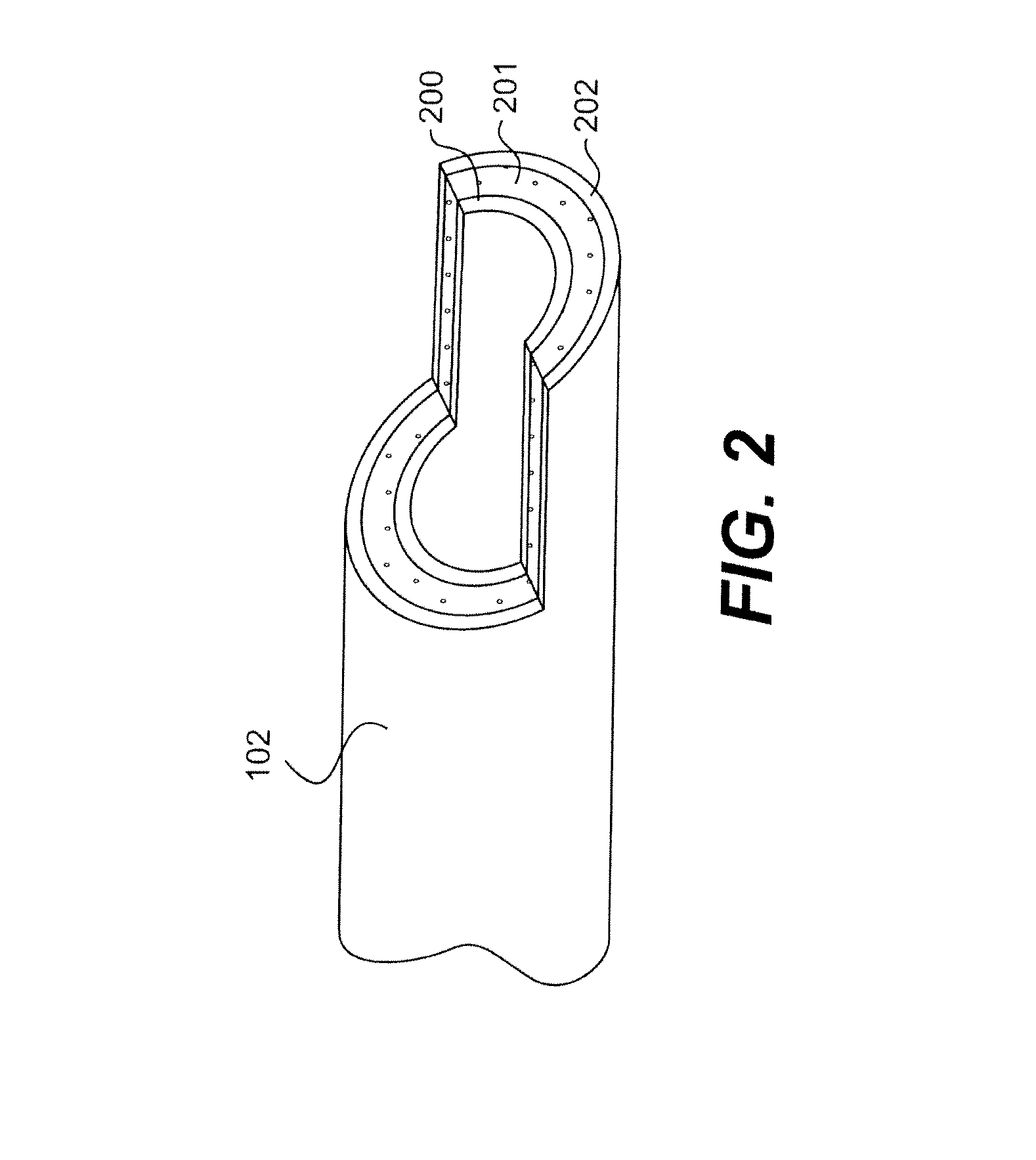Endovascular devices and methods
a technology of endovascular devices and methods, applied in the direction of fluid jet surgical cutters, catheters, veterinary instruments, etc., can solve the problems of cardiac tissue loss or patient death, significant risks to patient health, pain in angina, etc., and achieve the effect of reducing the chance of vessel perforation
- Summary
- Abstract
- Description
- Claims
- Application Information
AI Technical Summary
Benefits of technology
Problems solved by technology
Method used
Image
Examples
Embodiment Construction
[0024]The following detailed description should be read with reference to the drawings in which similar elements in different drawings are numbered the same. The drawings, which are not necessarily to scale, depict illustrative embodiments and are not intended to limit the scope of the invention.
[0025]Referring to FIG. 1, a diseased heart 100 includes a chronic total occlusion 101 of a coronary artery 102. FIG. 2 shows coronary artery 102 with intimal layer 200 (for sake of clarity, the multi layer intima is shown as a single homogenous layer). Concentrically outward of the intima is the medial layer 201 (which also is comprised of more than one layer but is shown as a single layer). The transition between the external most portion of the intima and the internal most portion of the media is referred to as the subintimal space. The outermost layer of the artery is the adventitia 202.
[0026]In an aspect of the disclosure, a subintimal device may be used to guide conventional devices (f...
PUM
 Login to View More
Login to View More Abstract
Description
Claims
Application Information
 Login to View More
Login to View More - R&D
- Intellectual Property
- Life Sciences
- Materials
- Tech Scout
- Unparalleled Data Quality
- Higher Quality Content
- 60% Fewer Hallucinations
Browse by: Latest US Patents, China's latest patents, Technical Efficacy Thesaurus, Application Domain, Technology Topic, Popular Technical Reports.
© 2025 PatSnap. All rights reserved.Legal|Privacy policy|Modern Slavery Act Transparency Statement|Sitemap|About US| Contact US: help@patsnap.com



